Making sense of the vast amounts of online content has become increasingly challenging. Thousands of articles, social media posts, reviews, and comments flood the internet every minute, creating a massive reservoir of unstructured data. AI content analysis has emerged as the essential tool for extracting valuable insights from this data deluge, helping businesses make informed decisions and gain competitive advantages.
What Is AI Content Analysis?
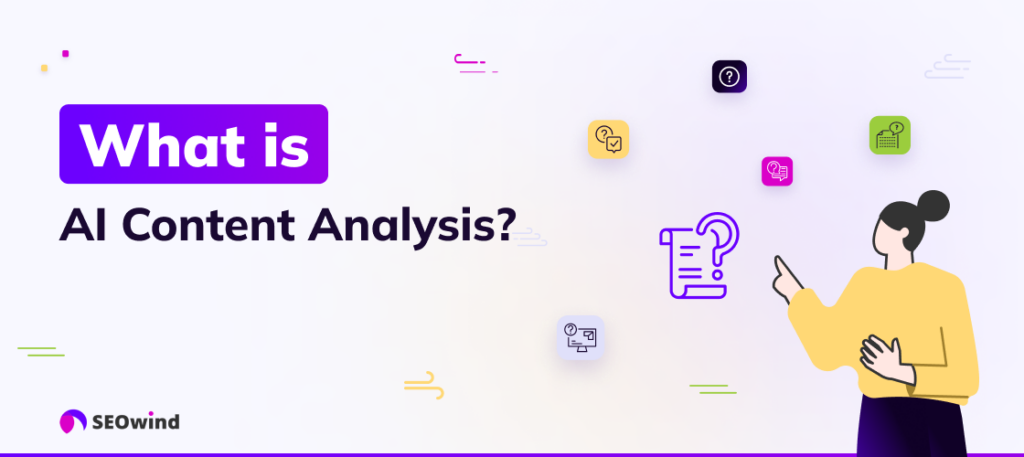
AI content analysis uses artificial intelligence systems to automatically examine, categorize, and extract meaningful insights from text and media content. Unlike traditional manual analysis methods, AI can process enormous volumes of information while understanding context, identifying patterns, and drawing connections that might otherwise remain hidden.
This technology interprets various content types through sophisticated algorithms that recognize keywords, sentiment tones, topic patterns, and semantic relationships. The analysis occurs at a scale and speed impossible for human analysts, transforming raw text data into structured, actionable intelligence.
According to a 2023 survey, 94.5% of content creators worldwide now use AI tools for content-related tasks, including editing, image generation, and caption writing. This dramatic increase reflects the growing recognition of AI’s value in content workflows.
As Sundar Pichai, CEO of Google, aptly notes: “The future of AI is not about replacing humans, it’s about augmenting human capabilities.” This philosophy underscores the collaborative potential of AI content analysis tools when integrated into human-led workflows.
Why AI Content Analysis Matters Now
he exponential growth of digital content has rendered traditional analysis methods obsolete. Manual content review is prohibitively time-consuming and increasingly impractical as content volumes continue to surge. AI content analysis addresses this challenge by offering:
- Scalable processing capabilities that handle millions of documents efficiently
- Consistent analytical approaches that eliminate human subjectivity and fatigue
- Continuous learning capabilities that improve accuracy over time
- Real-time processing abilities that enable immediate insights and actions
For businesses in competitive markets, the ability to quickly analyze customer feedback, social conversations, industry trends, and competitor content represents a significant strategic advantage. Research shows that 78% of U.S. companies in marketing, customer support, and media sectors have adopted AI for content-related purposes, demonstrating its growing importance across industries.
Key Benefits of AI Content Analysis
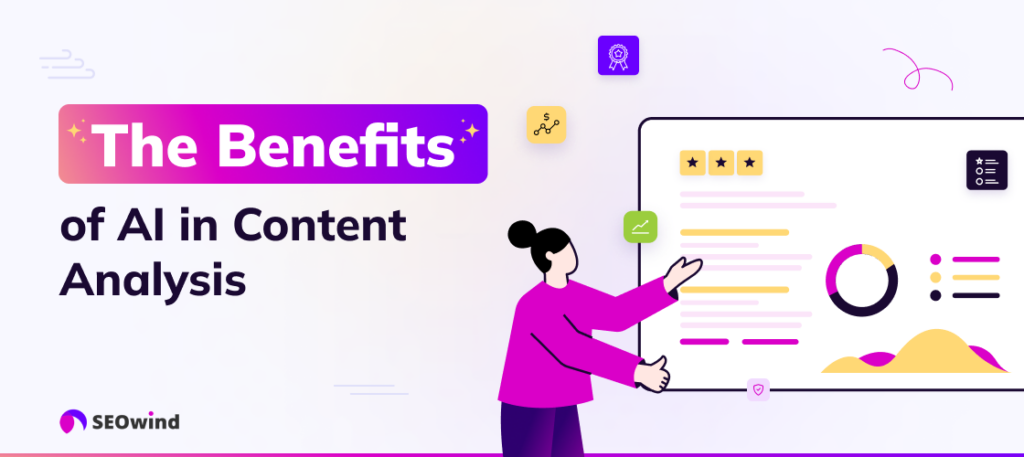
AI content analysis delivers transformative advantages across multiple business dimensions, from operational efficiencies to strategic insights.
Enhanced Efficiency and Accuracy
When processing large content volumes, AI systems demonstrate remarkable efficiency gains while maintaining high accuracy. Advanced algorithms can analyze millions of text documents in hours rather than the weeks or months required for manual review.
For enterprises managing vast content repositories or monitoring real-time social media conversations, this efficiency-accuracy combination enables previously impossible insights.
Cost-Effectiveness and Time-Saving
While implementing AI content analysis solutions requires initial investment, the return on investment quickly becomes apparent through:
- Reduced labor costs for routine content analysis tasks
- Faster time-to-insight for critical business decisions
- Reallocation of skilled team members to higher-value activities
- Elimination of costs associated with manual errors and inconsistencies
In 2023, 52% of organizations that actively use AI dedicated more than 5% of their digital budgets to AI implementation, up from 40% in 2018—a clear indication of the growing recognition of AI’s ROI potential.
Improved Data-Driven Decision Making
Decisions based on comprehensive data analysis outperform those relying on intuition or limited information. AI content analysis provides:
- Evidence-based insights into consumer preferences and behaviors
- Early detection of emerging market trends
- Competitive intelligence through analysis of industry content
- Performance measurement for content marketing initiatives
These capabilities enable businesses to make more informed decisions across marketing, product development, customer service, and strategic planning functions. As Jeff Bezos, Founder of Amazon, emphasizes: “The pace of progress in artificial intelligence is incredibly fast,” making it essential for organizations to adopt these technologies to remain competitive.
AI Content Analysis + SEOwind: A Powerful Combination
SEOwind’s AI-powered content intelligence platform leverages advanced content analysis capabilities to create highly effective SEO content focused on E-E-A-T. Unlike basic AI writing tools, SEOwind analyzes top-performing content in your niche to identify patterns, gaps, and opportunities before crafting optimized content that meets search engine and user requirements.
The platform’s analysis capabilities include:
- Competitive content assessment that identifies successful content structures
- Topic comprehensiveness evaluation to ensure adequate depth
- Keyword usage and distribution patterns analysis
- Content structure and readability examination
This analytical foundation ensures that content created with SEOwind is based on data-driven insights rather than guesswork, significantly improving the likelihood of ranking success.Here’s how SEOwind’s AI content analysis reshapes your content game:
- Competitive Content Assessment – Uncovers what makes top-ranking content tick – structure, flow, and strategy, so you’re not reinventing the wheel blindly.
- Topic Comprehensiveness Evaluation – Ensures your content has the right depth and breadth to satisfy search engines and readers.
- Keyword Usage & Distribution Patterns – Identifies powerful, underused keywords and suggests how to naturally weave them into your narrative, no more keyword roulette.
- Content Structure & Readability Analysis – Provides tactical improvements to make your content more engaging, scannable, and conversion-friendly.
- Audience Question Discovery – SEOwind reveals the questions your potential users are actually asking, so you stop guessing and start delivering precisely what they want.
Imagine having a lighthouse in the storm of content creation. That’s SEOwind, cutting through the fog with clarity, precision, and AI-driven insights that elevate content from “good enough” to “can’t ignore.”
In short, SEOwind fuses human creativity with machine intelligence, turning scattered data into strategic action. You bring the expertise, SEOwind amplifies it with surgical precision.gital strategists who understand and outsmart the dynamic landscape of content marketing.
How AI Content Analysis Works: Methods and Techniques
Understanding the underlying methods powering AI content analysis helps organizations implement these systems effectively and interpret their outputs correctly.
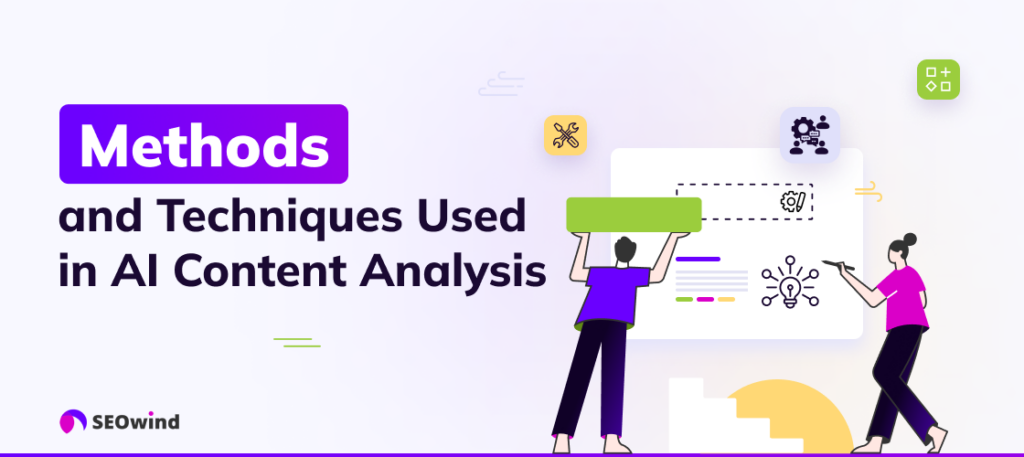
Machine Learning Algorithms for Classification and Clustering
At the core of AI content analysis are machine learning algorithms that perform two critical functions:
Text Classification assigns predefined categories or tags to content based on its features. This enables automatic sorting of content into relevant buckets—categorizing customer support tickets by issue type, identifying spam content, or flagging potentially sensitive material for review. Legal teams use classification to sort documents by relevance to specific cases. At the same time, marketing departments classify content by audience segment or buying stage.
Content Clustering groups similar pieces of content based on shared characteristics without predefined categories. This technique helps identify natural patterns and relationships in content collections. For blogs and content hubs, clustering creates topic clusters featuring similar content, improving user navigation and search visibility.
SEOwind employs these techniques to analyze existing high-ranking content, identifying topic clusters and classification patterns that correlate with search success. This intelligence informs content creation strategies that align with proven performance patterns.
Natural Language Processing for Text Understanding
Natural Language Processing (NLP) enables AI systems to comprehend human language increasingly sophisticatedly. Modern NLP techniques allow systems to:
- Recognize entities like people, organizations, locations, and products
- Extract relationships between these entities
- Identify sentiment and emotional tone
- Understand linguistic nuances like idioms and context-dependent meanings
NLP powers many consumer-facing AI applications, from virtual assistants to chatbots. Content analysis allows systems to move beyond simple keyword matching to genuine comprehension of textual meaning.
For example, NLP-based sentiment analysis can determine whether product reviews express positive, neutral, or negative opinions, even when the explicit words might suggest otherwise. Research indicates that 71% of content creators report positive audience reactions from using AI in their workflow, demonstrating the effectiveness of these technologies in enhancing content reception.
Deep Learning for Advanced Content Understanding
Deep learning represents the cutting edge of AI content analysis, using neural networks modeled after the human brain to identify complex patterns in data. These sophisticated models excel at:
- Detecting subtle sentiment variations beyond simple positive/negative classification
- Understanding semantic meaning and context across lengthy documents
- Recognizing visual elements in images and video content
- Processing multiple content types (text, images, audio) simultaneously
Deep learning models require substantial training data and computing resources but deliver superior results for complex content analysis tasks. Their ability to continuously improve makes them particularly valuable for organizations with growing content archives and evolving analysis needs.
Practical Implementation Guide for AI Content Analysis
Implementing AI content analysis requires a systematic approach that aligns technology with business objectives. Follow these key steps for effective deployment:
Step 1: Define Clear Objectives and Use Cases
Begin by identifying specific business problems that content analysis can solve. Every day use cases include:
- Customer feedback analysis to identify product improvement opportunities
- Content topic identification for more targeted content creation
- Competitive analysis to understand market positioning
- Brand sentiment monitoring across digital channels
- Content performance prediction based on historical patterns
For each use case, establish measurable goals. For example, “Reduce time spent analyzing customer feedback by 60%” or “Identify three new content topics monthly that align with emerging customer interests.”
Step 2: Select the Right Tools and Technologies
Choose AI content analysis tools that match your specific needs. Consider these factors:
- Content types you need to analyze (text, images, video, audio)
- Volume of content and processing requirements
- Specific analysis features needed (sentiment analysis, topic extraction, etc.)
- Integration capabilities with existing systems
- Ease of use for your team’s technical expertise level
- Budget constraints and ROI expectations
For most organizations, combining specialized tools yields better results than seeking a single solution for all content analysis needs. For example, SEOwind’s specialized focus on SEO content creation complements broader analysis tools like Originality.AI’s AI detection capabilities.
Step 3: Prepare Your Content Data
Data quality fundamentally determines analysis quality. Prepare your content by:
- Cleaning and standardizing text formats
- Removing duplicate content that could skew results
- Organizing content into logical collections
- Ensuring proper metadata tagging
- Creating training datasets for supervised learning approaches
This preparation stage, while time-consuming, dramatically improves analysis accuracy and prevents the “garbage in, garbage out” scenario that undermines many AI implementations.
Step 4: Configure and Train Analysis Models
Configure your selected tools for your specific content environment:
- Select or create appropriate taxonomies and classification schemes
- Train machine learning models with your prepared datasets
- Set appropriate thresholds for confidence scores
- Define rules for handling edge cases and exceptions
- Establish processes for human review of low-confidence results
For optimal results, iteratively refine these configurations based on initial analysis outcomes.
Step 5: Implement a Human-in-the-Loop Approach
AI content analysis works best when combined with human expertise. According to Semrush research, “57% of AI content and 58% of human content appeared in the top 10 search results,” showing the competitive potential of well-optimized AI content when guided by human oversight.
Implement processes for:
- Human validation of critical analysis outputs
- Subject matter expert review of identified trends and patterns
- Regular feedback loops to improve AI model performance
- Integration of qualitative human insights with quantitative AI analysis
- Continuous learning through documented successes and failures
Step 6: Scale and Iterate Based on Results
Once the initial implementation proves successful:
- Expand content sources and volumes analyzed
- Add new analysis types and metrics
- Integrate insights into more business processes
- Automate routine actions based on analysis results
- Continuously benchmark performance against objectives
Regular review of system performance helps identify opportunities for improvement and expansion.
AI Content Analysis Implementation Checklist
For organizations looking to quickly implement AI content analysis, this checklist provides a structured starting point:
- Assessment Phase (Week 1)
- Identify specific business problems to solve with content analysis
- Determine content types and volumes needing analysis
- Define key metrics for measuring implementation success
- Document current manual processes and their limitations
- Tool Selection (Week 2)
- Create a shortlist of tools matching your requirements
- Evaluate free trials or demos of candidate solutions
- Assess integration capabilities with existing systems
- Compare pricing against budget and expected ROI
- Preparation (Week 3)
- Create a sample dataset for initial testing
- Clean and standardize data formats
- Establish baseline metrics for current performance
- Develop validation methodologies for accuracy assessment
- Initial Deployment (Week 4)
- Configure selected tool(s) with initial settings
- Process test dataset and evaluate results
- Adjust settings based on initial findings
- Train key team members on system operation
- Scaling and Optimization (Ongoing)
- Gradually increase the content volumes processed
- Refine models based on performance feedback
- Document wins and ROI achievements
- Identify additional use cases for expansion
This structured approach ensures a methodical implementation that delivers measurable results while minimizing risks and resource waste.
Applications of AI in Content Analysis
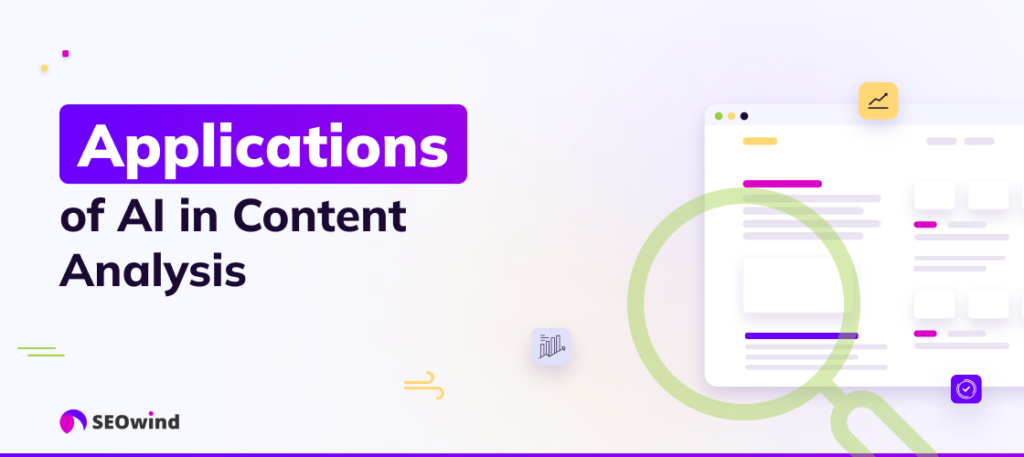
AI content analysis powers numerous practical business applications across departments and industries. Understanding these applications helps organizations identify their most valuable implementation opportunities.
Sentiment Analysis and Understanding Customer Opinions
Sentiment analysis automatically determines emotional tone in text content, whether customer reviews, social media comments, or survey responses express positive, negative, or neutral sentiment. More sophisticated systems detect complex emotions like frustration, delight, confusion, or anticipation.
This capability enables organizations to:
- Measure the sentiment impact of marketing campaigns and public relations efforts.
- Monitor brand perception across digital channels
- Identify product features that generate positive or negative reactions
- Detect shifts in customer sentiment before they impact sales
Topic Extraction and Content Organization
Topic extraction identifies the main subjects discussed across content collections, using techniques like Latent Dirichlet Allocation (LDA) and Term Frequency-Inverse Document Frequency (TF-IDF) to recognize patterns.
Organizations use topic extraction to:
- Organize vast document repositories for more straightforward navigation
- Identify emerging trends in customer discussions
- Discover content gaps in marketing materials
- Map competitive messaging and positioning
SEOwind leverages topic extraction to identify content gaps in existing SEO strategies, helping organizations create comprehensive content that addresses all relevant subtopics within a given subject area.
Content Recommendation and Personalization
AI content analysis powers recommendation engines that suggest relevant content based on user behavior, preferences, and contextual factors. These systems analyze content characteristics and user interaction patterns to deliver personalized experiences.
Effective recommendation systems:
- Increase engagement through relevant content suggestions
- Extend user session duration on digital properties
- Improve conversion rates through targeted recommendations
- Enhance customer satisfaction through personalized experiences
With 68% of marketers globally utilizing AI tools to assist in content creation processes, organizations can leverage these insights to create more targeted content that matches specific audience interests.
Content Quality and Compliance Screening
AI systems can automatically screen content for quality issues, inappropriate material, or compliance concerns. This capability is particularly valuable for:
- User-generated content moderation
- Regulatory compliance in financial and healthcare communications
- Brand safety monitoring in advertising placements
- Legal risk assessment in corporate communications
Tools like Originality.AI provide critical content verification services with 99%+ accuracy for AI detection and a false positive rate under 3%, helping organizations maintain content quality and authenticity.
Comparing Top AI Content Analysis Tools
The market offers numerous AI content analysis solutions with varying capabilities, price points, and specializations. This comparison highlights leading options to consider:
Originality.AI
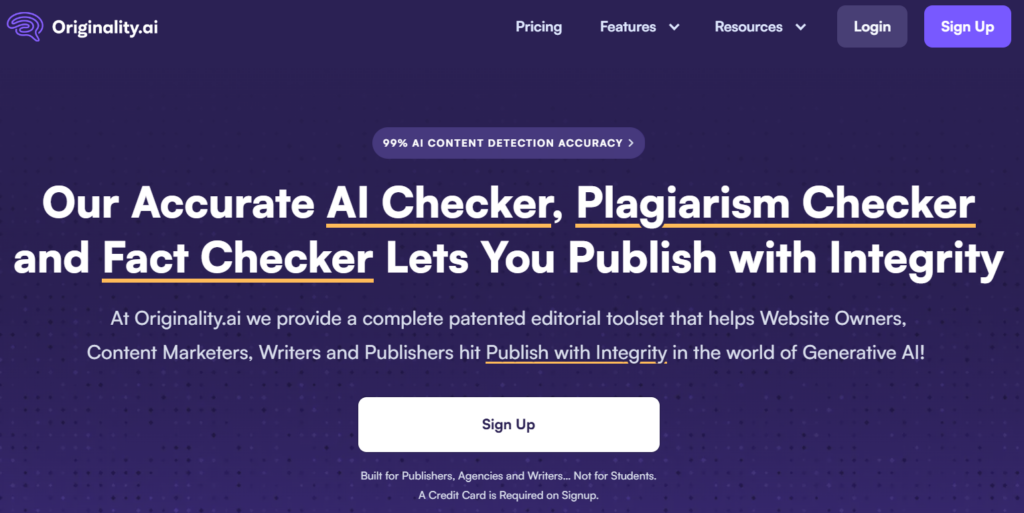
What should you know about Originality.ai:
- Key Features: Advanced AI detection, multiple file format support, detailed highlighting, API access
- Accuracy: 99%+ for AI detection with a false positive rate under 3%
- Best Use Cases: Academic integrity verification, professional content creation, agency workflows
- Strengths: Industry-leading accuracy rate for AI detection, comprehensive reporting, regular algorithm updates
Pricing:
- Pay As You Go: $30 one-time for 3000 Credits (1 Credit = 100 words)
- Base Subscription: $14.95/month or $12.95/month annually for 2000 Credits/month
Copyleaks
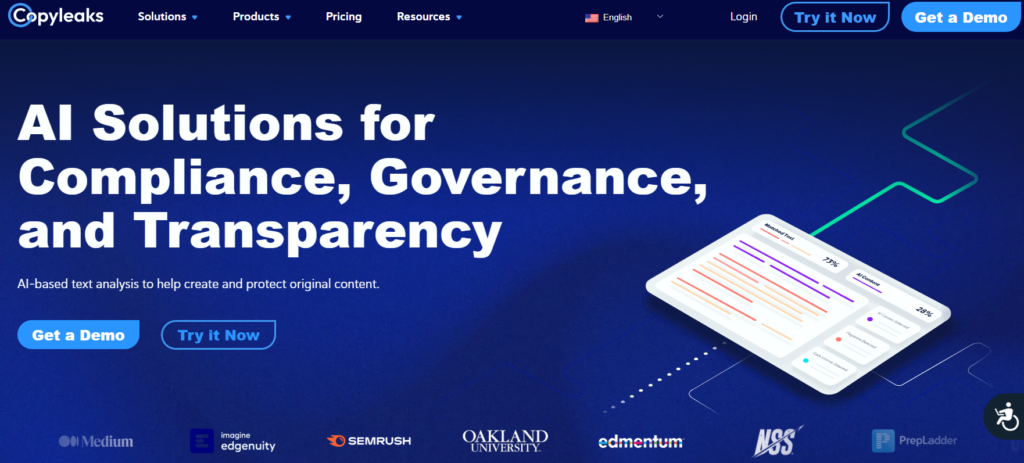
What you should know about Copyleaks:
- Key Features: Combined AI and plagiarism detection, integrations with Google Docs, MS Word, and Moodle, customizable sensitivity settings
- Best Use Cases: Educational institutions, enterprise compliance, publishing workflows
- Strengths: Seamless platform integrations, adjustable detection parameters, comprehensive content verification
GPTZero
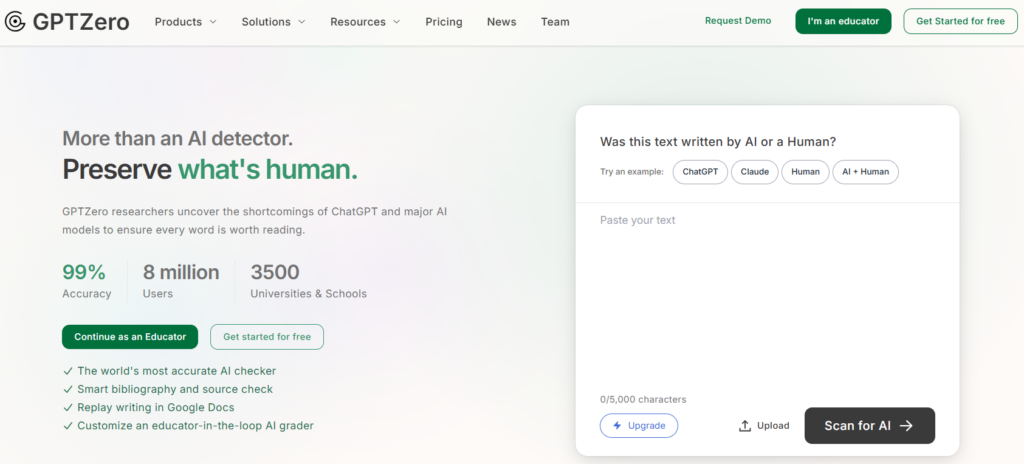
What you should know about GPTZero:
- Key Features: Perplexity and burstiness analysis for AI detection, free basic tier, innovative detection methodology
- Best Use Cases: Academic screening, editorial review processes, individual content verification
- Strengths: Accessible free version, sophisticated analysis metrics, easy-to-access interface
SEOwind
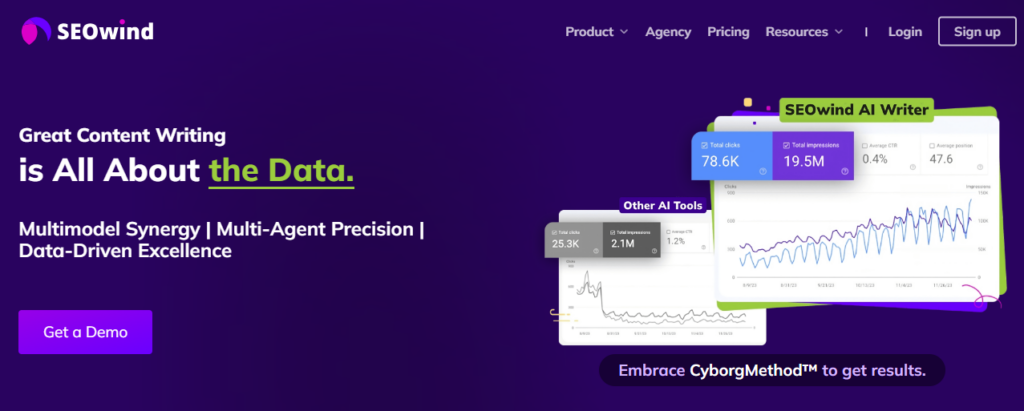
What you should know about SEOwind:
- Key Features: AI-powered content intelligence, competitive content analysis, SEO optimization, content structure recommendations
- Best Use Cases: Digital marketers, SEO teams, content creators, agencies managing multiple clients
- Strengths: Combines AI content analysis with creation capabilities, specializes in SEO-optimized content, and provides E-E-A-T enhancement
- Unique Advantage: Unlike pure analysis tools, SEOwind leverages analysis insights to directly create optimized content, streamlining the workflow from insight to implementation
When selecting a tool, consider your specific use cases, content volume, integration requirements, and budget constraints rather than focusing solely on features.
Ethical Considerations in AI Content Analysis
As AI content analysis becomes more prevalent, organizations must address important ethical considerations to ensure responsible implementation and use. Elon Musk’s observation that “AI is likely to be either the best or worst thing to happen to humanity” underscores the importance of ethical implementation.
Addressing Bias in AI Analysis Systems
AI systems can perpetuate or amplify biases present in their training data. For example, Amazon’s experimental AI recruiting tool showed bias against women because it was trained primarily on resumes from male applicants.
Best practices for minimizing bias include:
- Ensuring training data represents diverse demographic groups
- Conducting regular fairness audits using metrics like confusion matrices and disparity assessments
- Implementing targeted data point analysis to identify specific sources of bias
- Using tools like LIME (Local Interpretable Model-agnostic Explanations) and SHAP (Shapley Additive exPlanations) to understand model decisions
Organizations that prioritize bias detection and mitigation create more ethical systems and often see improved accuracy. After conducting comprehensive fairness audits, Microsoft’s facial recognition system improved accuracy rates for darker-skinned women from 79% to 93%.
Privacy Compliance in Content Analysis
Content analysis often involves processing personal information and raising important privacy considerations. Organizations must:
- Obtain appropriate consent for content analysis activities
- Implement data minimization principles to collect only necessary information
- Establish clear data retention policies and procedures
- Comply with relevant regulations like GDPR, CCPA, and industry-specific requirements
- Provide transparency about how analysis results will be used
Techniques for privacy-preserving content analysis include anonymization, pseudonymization, and aggregation of results to protect individual identities while still extracting valuable insights.
Transparency in AI-Powered Decision Making
When AI content analysis influences business decisions, transparency becomes essential for maintaining trust with customers, employees, and stakeholders. Organizations should:
- Implement explainable AI techniques that make decision processes understandable
- Clearly communicate when content analysis systems are being used
- Provide mechanisms for challenging or appealing automated decisions
- Document analysis methodologies and limitations
- Maintain human oversight for consequential decisions
Explainable AI implementations help demystify AI decisions and make them more transparent to all stakeholders.
Case Study: AI Content Analysis in Action with SEOwind
Challenge: A mid-sized digital marketing agency struggled to create consistently high-performing SEO content for multiple clients across diverse industries.
Solution: Implemented SEOwind’s AI content intelligence platform to analyze competitive content, identify performance patterns, generate optimized content drafts, and content updates.
Results:
- Increased client content ranking in top 10 search results by 31%
- Reduced content creation time by 60% while maintaining quality
- Generated 35% more organic traffic for client websites
- Improved content team scalability, handling 2x more clients without additional staff
Before using SEOwind, content quality varied significantly between writers and topics. Now they have a consistent framework that ensures every piece meets performance benchmarks while saving our team valuable time.
Common Questions About AI Content Analysis

Organizations considering AI content analysis often have questions about implementation, capabilities, and limitations. These frequently asked questions address common concerns:
How accurate are AI content analysis tools?
Accuracy varies by task type and tool sophistication. Sentiment analysis typically achieves 70-90% accuracy compared to human judgment, while topic classification can reach 80-95% accuracy for well-defined categories.
For specific tools like Originality.AI, accuracy rates can reach 99%+ for AI detection with false positive rates under 3%. Accuracy improves with:
- High-quality training data specific to your content domain
- Regular model retraining with feedback from results
- Appropriate confidence thresholds for different analysis tasks
- Human review for edge cases and low-confidence results
What content types can be analyzed with AI tools?
Most AI content analysis tools focus on text, but capabilities have expanded to include:
- Images (through computer vision and object recognition)
- Audio (through speech-to-text conversion and audio feature analysis)
- Video (through frame analysis and transcription)
- Structured data combined with unstructured content
Multi-modal analysis—examining text, images, and other media together—represents the leading edge of content analysis capabilities.
How do AI content analysis tools handle multiple languages?
Language capabilities vary significantly between tools. Some considerations include:
- Language-specific models typically outperform multilingual models for supported languages
- Many tools offer robust support for major European languages but limited capabilities for others
- Translation-based approaches can work, but often miss linguistic nuances
- Language-specific training data improves results substantially
Organizations with multiple languages should carefully evaluate tool capabilities against their specific language needs.
How can small businesses benefit from AI content analysis?
Small businesses can leverage AI content analysis through:
- SaaS platforms with affordable entry-level plans
- Focused implementation targeting specific high-value use cases
- Pre-trained models that don’t require extensive custom training
- Analysis of social media mentions and customer feedback
- Competitive content analysis to identify market opportunities
Starting with a clearly defined business problem and measurable goals helps small businesses achieve positive ROI from even limited AI content analysis implementations.
Future Trends in AI Content Analysis
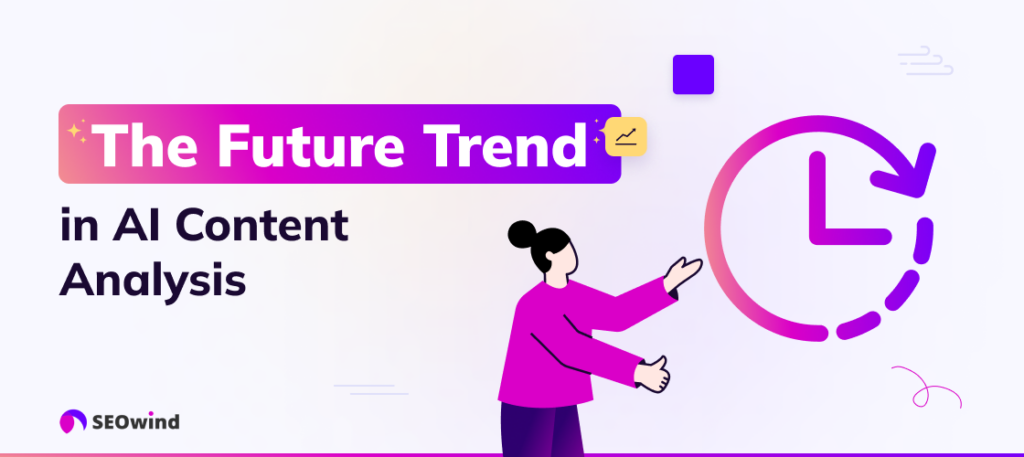
AI content analysis continues to evolve rapidly, with several important trends shaping its future development and applications.
Advanced Natural Language Understanding
Next-generation NLP models are moving beyond basic comprehension to more sophisticated language understanding. Developments include:
- Improved understanding of context across lengthy documents
- Better recognition of implicit meaning and subtext
- More accurate identification of authorial intent and tone
- Enhanced comprehension of specialized terminology and jargon
These advancements will make content analysis more accurate and insightful, particularly for complex or technical content.
Multimodal Content Analysis
Future systems will increasingly analyze multiple content types simultaneously, providing a comprehensive understanding across:
- Text content and metadata
- Images and visual elements
- Video content and motion
- Audio and speech components
- Interactive elements and user behavior
This integrated analysis will provide richer insights than examining each content type in isolation, enabling more sophisticated content intelligence.
Personalized Content Analysis Applications
As analysis systems become more sophisticated, they’ll increasingly adapt to individual users’ needs and preferences:
- Customized content recommendations based on personal interests
- Learning-focused content analysis for educational applications
- Health-optimized content filtering for wellbeing applications
- Specialized analysis for different professional roles and requirements
This personalization will make content analysis more valuable by tailoring insights to specific user contexts and needs.
Ethical AI Analysis Systems
Future development will emphasize creating more ethical, transparent, and fair analysis systems:
- Improved bias detection and mitigation capabilities
- More explainable AI decision processes
- Privacy-preserving analysis techniques
- Standardized ethics frameworks and certifications
These ethical improvements will increase trust in AI content analysis while reducing potential harms from biased or opaque systems.
The Strategic Value of AI Content Analysis
AI content analysis has evolved from an experimental technology to an essential business capability. With 94.5% of content creators worldwide now using AI tools for content-related tasks, organizations that effectively implement these tools gain significant advantages in understanding customer needs, optimizing content performance, and making data-driven decisions.
The most successful implementations combine sophisticated AI capabilities with human expertise, using automation to handle scale and repetitive analysis while relying on human judgment for context, nuance, and creative interpretation of insights.
Tools like SEOwind demonstrate this synergy by analyzing top-performing content patterns and applying those insights to content creation, ensuring that AI-generated content meets search engine requirements and user expectations.
As content volumes continue growing exponentially, AI analysis will become increasingly indispensable. Organizations should build these capabilities now, starting with clearly defined use cases that deliver measurable business value while developing the expertise to expand applications over time.
By transforming unstructured content into structured insights, AI content analysis bridges the gap between information overload and actionable intelligence, enabling organizations to collect and understand data.


